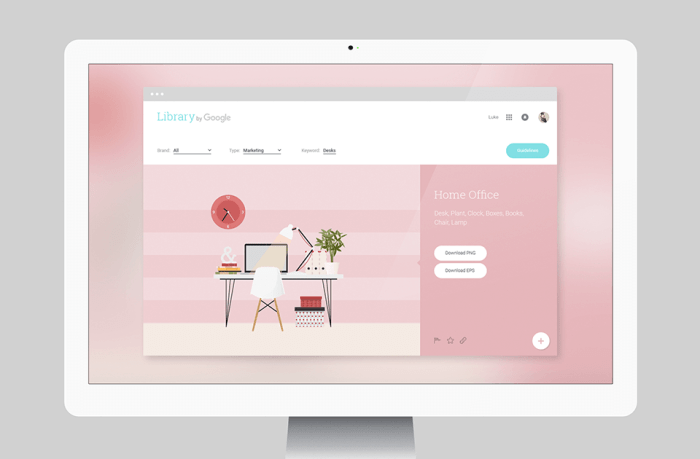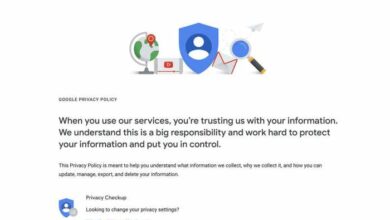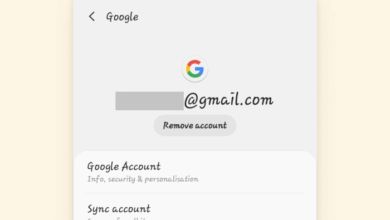Googles Online Libraries Search & Research
Search and research Google takes libraries online, offering a new frontier in accessible knowledge. Imagine a world where the vast resources of libraries are instantly searchable, enhancing research capabilities for everyone. This initiative promises to democratize access to information, connecting users with a wealth of digital content across various disciplines.
This exploration delves into Google’s digital library initiatives, examining how these resources enhance search and research capabilities, impact libraries and information professionals, and open new possibilities in education and beyond. We’ll analyze the user experience, ethical considerations, and the future potential of this transformative technology.
Google’s Digital Library Initiatives
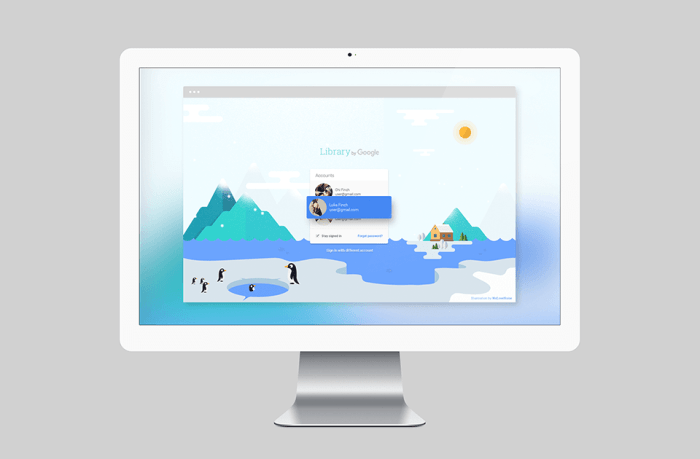
Google has been a significant player in making information more accessible through its various digital library initiatives. These programs leverage technology to digitize vast collections, allowing wider access to cultural heritage and scholarly resources. From books and journals to historical documents and primary sources, Google’s efforts are revolutionizing how we interact with knowledge.These initiatives contribute to the accessibility of information by removing geographical barriers and providing affordable or free access to a wealth of resources.
This accessibility extends beyond traditional library patrons, making invaluable information available to researchers, educators, and the general public alike. Furthermore, the searchable nature of these digitized collections allows for efficient information retrieval, facilitating research and learning in unprecedented ways.
Overview of Google’s Digital Library Initiatives
Google’s digital library initiatives encompass a range of projects designed to digitize and make accessible diverse content. These efforts span various formats, from printed books to archival documents, providing a multifaceted approach to information sharing.
Types of Content Available
This initiative offers a wide array of content, catering to diverse information needs. Digitalized books, journals, newspapers, and historical documents are readily available. The digitized content also includes rare manuscripts, maps, photographs, and other visual materials. The variety and depth of this material provide a comprehensive resource for research and study.
Examples of Partnered Digital Libraries and Archives
Google has collaborated with numerous libraries and archives worldwide. For example, Google Books partners with libraries to digitize their collections, making them available online. Similarly, Google Arts & Culture provides access to global art collections, including museums and historical sites. This partnership model extends the reach and impact of these initiatives, broadening the availability of information for the benefit of the entire global community.
Comparison of Digital Library Platforms
| Platform | Strengths | Weaknesses |
|---|---|---|
| Google Books | Vast collection of digitized books, including out-of-print titles; search functionality across diverse collections; often free access to texts. | Limited access to certain types of content (e.g., copyrighted materials may have restrictions); quality of OCR (optical character recognition) can vary, leading to occasional errors in the digitized text; potential for copyright disputes. |
| Google Arts & Culture | Access to diverse and globally distributed collections of art, artifacts, and historical sites; often includes high-quality images and interactive elements; engaging and visually appealing platform. | Content may be limited to specific areas of expertise; information presented can be curated, potentially omitting context; heavy reliance on visual materials might not cater to all learning styles. |
| Internet Archive | Extensive collection of digitized books, websites, and other materials; emphasis on preservation of digital culture; strong support for open access to information. | Content can be uneven in quality, with some materials requiring additional verification; navigation and organization of material can sometimes be less intuitive than other platforms; maintenance and upkeep of the vast archive require substantial resources. |
Search and Research Enhancements
Google’s ongoing commitment to making information more accessible has led to significant enhancements in search and research capabilities, particularly when integrating digital library resources. These advancements are transforming how users discover and utilize information, offering a more comprehensive and efficient research experience. This shift reflects a broader trend towards integrating online resources into the fabric of everyday information retrieval.Google’s search algorithms are constantly evolving to better understand and index the vast array of digital library materials.
This adaptation involves incorporating new metadata formats and indexing strategies to ensure that relevant information is easily discoverable. The aim is to make the digital library’s content seamlessly integrated into Google’s search results, thereby improving the overall search experience.
Adapting Search Algorithms for Digital Libraries
Google’s search algorithms are meticulously trained to identify and prioritize relevant information from diverse sources, including digital libraries. This involves sophisticated techniques to analyze the content, structure, and context of documents from these libraries. The goal is to provide more accurate and comprehensive search results that reflect the nuanced nature of the information within digital libraries.
Advanced Search Functionalities for Digital Libraries
Advanced search functionalities within Google enhance the user experience by enabling targeted queries within digital library resources. These tools allow users to refine searches based on specific criteria, such as date ranges, author, s, and publication type. The inclusion of filters and facets empowers users to narrow their searches effectively, leading to more focused and productive research.
Comparison of Traditional and Digital Library Search Methods
Traditional search methods often rely on -based searches across various websites. In contrast, digital library searches allow users to drill down into specialized collections, utilizing metadata and advanced filters for more targeted retrieval. This targeted approach results in a higher precision of results. The digital library approach offers greater depth and context, often leading to more comprehensive research outcomes.
Improved Search Results with Digital Library Content
The integration of digital library content into Google’s search results significantly enhances the quality of search results. Users can access curated collections, scholarly articles, and primary sources, all in a single search. This access significantly increases the breadth and depth of information readily available to researchers and learners. The inclusion of contextual information, such as the library’s provenance and the source’s credibility, further enhances the reliability and value of the search results.
User Experience and Accessibility
Google’s foray into digital libraries represents a significant opportunity to democratize access to knowledge. A key component of this success hinges on creating a seamless and inclusive user experience. This necessitates thoughtful design principles, robust accessibility features, and a nuanced understanding of cultural and linguistic diversity. This exploration dives into the crucial aspects of user experience and accessibility in Google’s digital library initiatives.User experience is paramount for effective engagement with digital library resources.
A well-designed interface encourages exploration and discovery, guiding users intuitively through the vast repositories of information. Accessibility features, on the other hand, ensure that individuals with disabilities can fully participate in accessing and utilizing these digital resources.
Google’s initiative to bring library resources online for search and research is a fantastic development. While that’s happening, it’s interesting to see how the tech world is also navigating other challenges. For example, the recent settlement in the Microsoft antitrust trial, detailed in this article microsoft settles with last states in antitrust trial , highlights the complexities of competition in the digital age.
Ultimately, these advancements in online access to knowledge, through initiatives like Google’s, are critical for the future of learning and discovery.
User Experience Design Principles
A user-friendly interface for digital libraries should prioritize intuitive navigation and clear information architecture. This involves carefully structuring search options, displaying relevant results effectively, and enabling personalized recommendations based on user preferences. Clear visual cues and consistent design elements contribute to a cohesive and user-friendly experience. A well-organized layout, with easily identifiable sections and categories, allows users to quickly locate desired materials.
Accessibility Features
Google’s digital library initiatives should incorporate a comprehensive suite of accessibility features. These features should include text-to-speech functionality, adjustable font sizes, high contrast modes, and keyboard navigation options. Furthermore, the inclusion of alternative text descriptions for images and transcripts for audio content is essential for users with visual or auditory impairments.
Search and Navigation Improvements
To enhance search and navigation within digital libraries, Google can implement more sophisticated search algorithms. These algorithms should be capable of understanding user intent and returning highly relevant results, even with ambiguous or complex queries. Natural language processing (NLP) can further refine search accuracy, enabling users to interact with the library in a more conversational and intuitive manner.
Integration with external metadata standards and the ability to search across multiple digital library resources simultaneously will also improve user experience.
Language and Cultural Considerations
The accessibility of digital library content is significantly impacted by language and cultural considerations. Google must provide support for multiple languages and scripts, ensuring that users from diverse cultural backgrounds can access and understand the information presented. This includes accurate translations, localized search options, and culturally sensitive content presentation. For example, displaying dates and times in formats that are relevant to the user’s region is critical for accuracy and comprehension.
User Interface Options for Diverse Digital Library Resources
| User Interface Option | Description | Target User Group |
|---|---|---|
| Simplified Search Interface | A streamlined search interface with fewer options and simpler language for users new to digital libraries or those with cognitive disabilities. | New users, users with cognitive disabilities. |
| Advanced Search Options | An interface with multiple search criteria, allowing users to refine their searches with more specific terms and parameters. | Researchers, scholars, advanced users. |
| Visual Search Interface | An interface that allows users to search for images, documents, or other digital resources using visual cues. | Users with visual impairments, users seeking specific visual materials. |
| Mobile-optimized Interface | A responsive interface that adapts to various screen sizes, allowing users to access digital libraries on smartphones and tablets. | Users accessing the library from mobile devices. |
Impact on Libraries and Information Professionals
Integrating Google’s resources into library systems presents a transformative opportunity, potentially revolutionizing how information is accessed and shared. This integration promises a wider reach for library collections, potentially improving access for underserved communities. However, it also introduces new challenges that need careful consideration. This section explores the potential benefits and hurdles for libraries and information professionals in this evolving landscape.The potential benefits of integrating digital library resources into Google’s platform are substantial.
Enhanced discoverability, broader reach, and improved user experience are among the significant advantages. Conversely, issues like data privacy, copyright management, and potential displacement of traditional library roles require careful consideration. Addressing these challenges will be crucial for a successful and equitable integration.
Potential Benefits of Integration
The integration of digital library resources into Google’s platform offers significant advantages for both users and libraries. Improved searchability, accessibility, and broader outreach are among the most promising benefits. This improved accessibility can enhance the overall quality of information resources for a wider audience.
Challenges of Integration
Several challenges must be addressed when integrating library resources into Google’s platform. Maintaining data privacy and security is paramount, requiring robust protocols and safeguards. Copyright management and licensing issues also require careful consideration, as different materials may have various restrictions. Ensuring equitable access and preventing the displacement of traditional library roles are essential for a successful transition.
Promoting Library Collections on Google’s Platform
Libraries can leverage Google’s platform to promote their collections effectively. Developing engaging online profiles, creating informative metadata, and optimizing content for search algorithms are crucial steps. Strategic partnerships with Google’s services can expand visibility and reach, increasing user engagement.
Ways Google Can Support Libraries in Digitization
Google can play a significant role in supporting libraries’ digitization efforts. Providing tools and resources for metadata creation, image processing, and preservation would be valuable. Collaborating on digitization projects, especially with historically underserved communities, could significantly enhance accessibility. Offering technical support and training to library staff would also be beneficial.
Potential Partnerships Between Google and Libraries
Strategic partnerships between Google and libraries can create mutually beneficial outcomes. Joint projects for digitizing unique collections, developing online resources, and providing training programs can significantly enhance library services. Collaborations on outreach initiatives to underserved communities could also increase the impact of library services.
- Joint digitization projects focused on historical documents and rare materials.
- Development of online exhibitions and digital archives.
- Creation of training programs for library staff on using Google’s tools.
- Collaborations on outreach programs to underserved communities.
Potential Changes in Librarian Roles and Responsibilities
The integration of Google’s platform into library systems will likely impact the roles and responsibilities of librarians. Librarians will need to adapt to new technologies and user expectations, becoming more tech-savvy and digitally proficient. This could lead to a shift in responsibilities, focusing on user guidance, resource curation, and digital literacy.
Google’s efforts to bring libraries online for easier search and research are a fantastic development. However, it’s a stark contrast to the recent creation of a controversial internet game recreating the JFK assassination, controversial internet game recreates jfk assassination. This highlights the double-edged sword of easily accessible information; while democratizing knowledge, it also presents challenges in terms of responsible use and sensitive historical events.
Ultimately, the accessibility of knowledge through initiatives like Google’s online library programs is a powerful tool for good, when used with critical thinking and respect for context.
| Current Role | Potential New Role |
|---|---|
| Traditional Research Guide | Digital Information Navigator |
| Collection Manager | Digital Asset Curator |
| Physical Space Manager | Virtual Space Facilitator |
Educational Applications
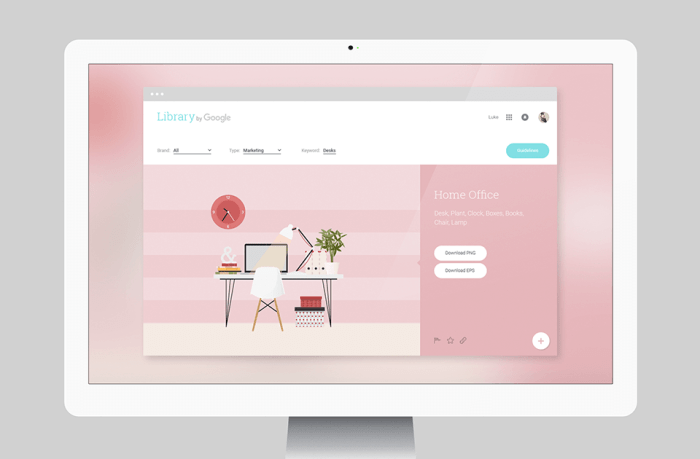
Google’s digital library initiatives offer a transformative potential for education, revolutionizing how students learn and researchers conduct their work. By making vast amounts of information accessible online, Google empowers educators and learners alike to explore a wealth of knowledge beyond traditional textbooks and classrooms. This accessibility extends far beyond developed nations, opening up educational opportunities for underserved communities.
Potential Uses in Academic Settings
Google’s digital libraries can significantly support research and learning in academic settings. Students and faculty can access a vast collection of scholarly articles, books, and primary sources, enabling deeper investigation into various subjects. This expanded access to information can lead to more robust research projects and a richer learning experience for students. Researchers can utilize Google’s powerful search tools to identify relevant information quickly and efficiently, saving considerable time and effort in their research endeavors.
The availability of primary source materials within the digital library enhances historical analysis and understanding.
Enhancing the Curriculum
Digital libraries can enrich the curriculum in numerous ways. They provide a platform for incorporating diverse perspectives and materials into lesson plans. By utilizing a wide range of resources, teachers can tailor their instruction to meet the unique needs of their students. This includes incorporating primary source documents, multimedia content, and interactive tools. Examples include historical documents that bring history to life, or digitized scientific journals that illustrate scientific concepts.
Promoting Access to Education for Underserved Communities
Google’s digital libraries play a crucial role in promoting access to education for underserved communities. By providing free and open access to information, Google empowers individuals in areas with limited access to traditional libraries and educational resources. This increased accessibility bridges the educational gap and allows learners to pursue their educational goals regardless of their socioeconomic background or geographic location.
This is especially valuable for students in rural areas or those from marginalized communities.
Interactive Tools and Multimedia Content
Google’s digital library platform can integrate interactive tools and multimedia content to enhance the learning experience. This approach can make learning more engaging and effective. Interactive maps, timelines, 3D models, and simulations can provide visual representations of complex concepts. Videos, audio recordings, and images can help learners grasp information from different perspectives. These elements make learning more dynamic and foster a deeper understanding of the subject matter.
For example, an interactive timeline of historical events allows students to explore the sequence of events visually and engage with the information on a more personal level.
Ethical Considerations and Data Privacy
Integrating library resources with Google’s vast platform presents exciting opportunities but also necessitates careful consideration of ethical implications and data privacy. This section delves into the potential challenges and safeguards needed to ensure responsible use and protection of information. Digital libraries, while democratizing access, must uphold the highest standards of ethical conduct to avoid unintended consequences.
Potential Ethical Concerns, Search and research google takes libraries online
Digital library integration with Google raises several ethical concerns. The vast scale of Google’s data collection and analysis methods, coupled with the sheer volume of information available, poses potential risks for misuse and misrepresentation. Users must be aware of the potential for biased information or the unintended consequences of algorithms employed by Google. Furthermore, the centralization of data raises concerns about control and transparency.
Questions arise about the ownership of intellectual property and the potential for manipulation of search results or information access based on user profiles or preferences.
Data Privacy in the Digital Library
Maintaining user privacy is paramount in the context of digital library integration with Google. Google’s commitment to data security and user privacy must be transparent and readily accessible to users. Ensuring user data is collected, processed, and stored in compliance with relevant regulations like GDPR is crucial. Clear policies regarding data retention, access, and use must be established and communicated to users.
Google’s amazing work taking libraries online for search and research is pretty cool. Thinking about the gift-giving season, I’ve been brainstorming some unique presents, like maybe a subscription to a virtual library database or a high-tech e-reader for exploring those online resources. Checking out some cool and unusual gifts for christmas could spark some ideas.
Ultimately, though, these online library resources are incredibly valuable for learning and expanding knowledge.
Users should have control over their data, including the ability to access, modify, or delete it.
Misuse of Information within Digital Libraries
The potential for misuse of information within digital libraries exists. This could range from the misrepresentation or manipulation of data to the dissemination of harmful or misleading content. Malicious actors could potentially exploit digital library resources to spread propaganda or engage in harmful activities. Therefore, robust systems for detecting and mitigating such risks are essential. These measures could include content moderation policies and collaboration with library professionals to identify and address potentially harmful content.
Best Practices for Data Security and User Privacy
Several best practices can be implemented to ensure data security and user privacy in the digital library environment. These include employing strong encryption protocols for data transmission and storage. Regular security audits and vulnerability assessments are essential. User authentication and authorization mechanisms should be implemented to control access to sensitive data. Educating users about responsible information usage and data privacy practices is also critical.
Policies and Measures for Data Protection
The following table Artikels policies and measures for protecting user data and intellectual property rights.
| Policy Area | Description | Implementation Details |
|---|---|---|
| Data Encryption | Data transmission and storage should be encrypted using strong encryption protocols. | Implement HTTPS for all communication channels. Employ robust encryption algorithms like AES-256. |
| Access Control | Restrict access to sensitive data based on user roles and permissions. | Implement multi-factor authentication for sensitive areas. Enforce granular access control mechanisms. |
| Data Retention | Establish clear data retention policies. | Specify timeframes for data storage and deletion. Ensure compliance with data privacy regulations. |
| Transparency | Provide clear and concise information regarding data collection, usage, and security practices. | Develop comprehensive privacy policies. Make data security practices easily accessible. |
| Intellectual Property Rights | Acknowledge and respect intellectual property rights of content providers. | Obtain necessary licenses and permissions. Clearly state terms of use for digital materials. |
Future Trends and Possibilities
Google’s integration of libraries into its online search and research platform presents exciting possibilities for the future of information access. The potential for enhanced user experiences, fueled by advancements in AI and machine learning, is immense. This evolution promises to revolutionize how we discover, understand, and utilize information resources, bridging the gap between physical and digital libraries.This integration offers a unique opportunity to reshape how we learn, work, and engage with knowledge.
By leveraging cutting-edge technologies, Google can significantly improve the quality and accessibility of information for everyone. The potential for transforming research and education is significant.
Potential Advancements in AI and Machine Learning
AI and machine learning are poised to play a crucial role in enhancing digital library access and research. These technologies can analyze vast amounts of data from library collections, identify patterns, and provide personalized recommendations to users. For example, AI-powered tools can automatically summarize complex research papers, extract key insights, and translate documents into multiple languages. This will significantly improve the efficiency and effectiveness of research activities.
Furthermore, AI-driven chatbots can assist users in finding relevant resources and provide expert-level support.
Emerging Technologies Transforming User Experience
Several emerging technologies have the potential to revolutionize the user experience for digital libraries. Virtual reality (VR) and augmented reality (AR) technologies can create immersive learning experiences, allowing users to virtually explore historical artifacts, scientific models, or literary landscapes. For instance, a user could virtually step inside a historical library or interact with a 3D model of a complex scientific apparatus.
Interactive simulations and 3D models can bring abstract concepts to life. Similarly, advancements in natural language processing (NLP) can enable more intuitive and context-aware search queries. Users can formulate queries using natural language, similar to how they would ask a librarian, leading to more precise and relevant results.
Leveraging Advanced Technologies to Support Library Collections
Google can leverage advanced technologies to enhance the quality and accessibility of library collections. Cloud-based storage solutions can ensure the long-term preservation of digital resources, while advanced image recognition technology can enhance the cataloging and searchability of digitized collections. For instance, image recognition can automatically tag historical photographs with accurate metadata, making them easier to find and understand.
This would make historical materials far more discoverable. This also applies to digitized manuscripts, archives, and artwork. Data encryption and security measures can be further implemented to protect sensitive data.
Future Research Directions
Improving the effectiveness of Google’s digital library initiatives requires focused research in several areas. Research on the impact of personalization on user engagement and information retrieval is crucial. Furthermore, exploring the ethical implications of AI-driven tools in library settings is essential. Also, the development of robust methods for evaluating the quality and accuracy of information retrieved from digital libraries is critical.
Finally, research into the best ways to integrate physical and digital library resources to provide comprehensive information access is also essential. Examples include developing methods to discover relevant physical items in a library when a user is accessing a digital resource.
Wrap-Up: Search And Research Google Takes Libraries Online
In conclusion, Google’s integration of libraries online represents a significant advancement in information access. By seamlessly connecting digital resources with powerful search algorithms, Google creates a more efficient and accessible knowledge ecosystem. The future holds exciting possibilities for expanded research capabilities, educational opportunities, and enhanced user experiences. However, ethical considerations and data privacy remain paramount as this transformative technology continues to evolve.

